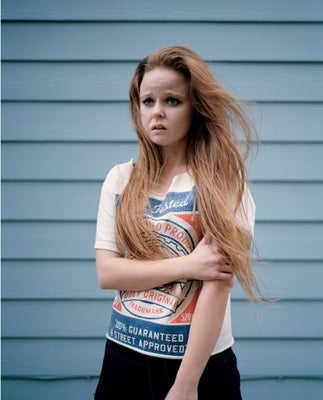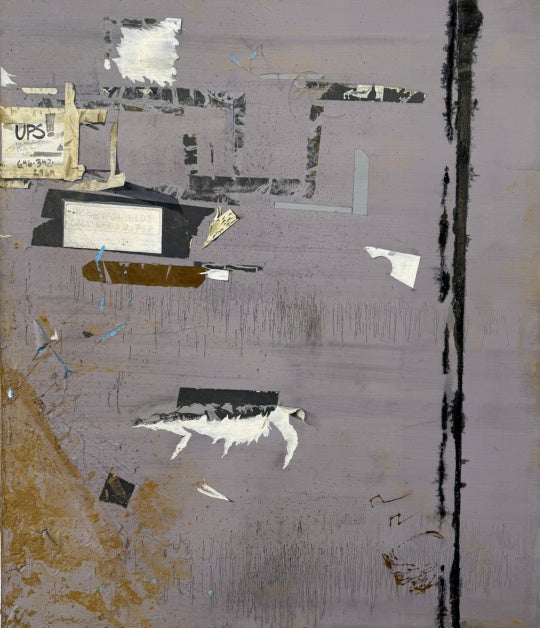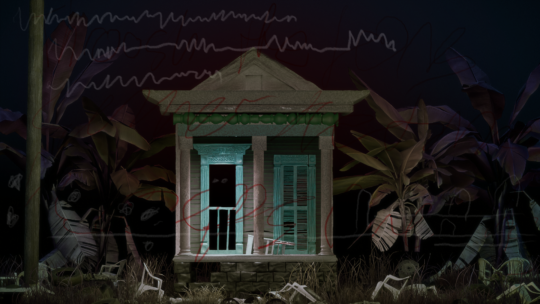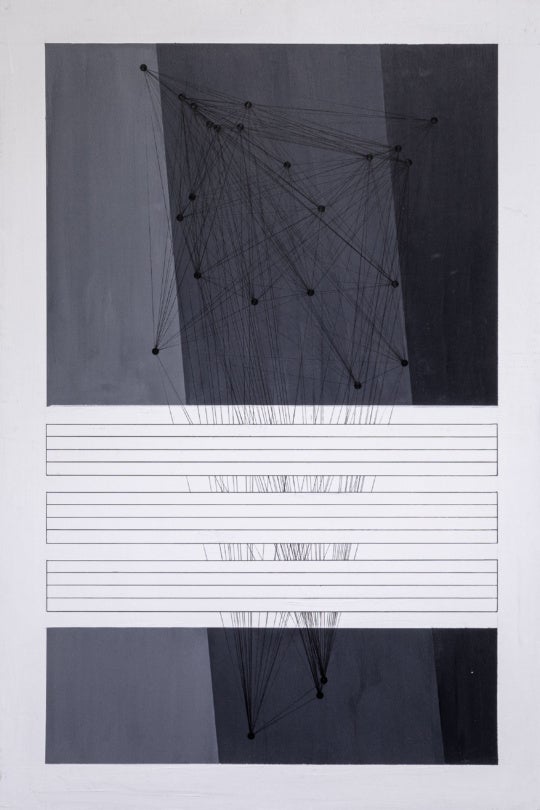
Each individual element in Jill Frank’s show, “Nothing Ventured // Nothing Gained,” looks technically perfect—like striking magazine images of American social life. Her composition, framing, detail, and color are planned and precise. The installation of the show itself is delightfully well executed and features two-sided portraits framed and hung in the middle of the gallery, enticing viewers to make a 360 around these works. The print quality is noticeably high. Frank works like a documentary nature photographer, but her subject of choice is American teens and young adults in their natural surroundings. According to her show statement, Frank takes “chaotic social activities such as parties, games, and contests” and brings out the symbols and clichés of “American social ritual.” The resulting images are highly focused presentations of our American visual vernacular. Despite the thoughtfulness of each image and the perfection of individual elements, I didn’t connect with the work. Frank presents casual images like snapshots, but her keen saturation of photographic clichés makes her work ring false.
The work in “Nothing Ventured // Nothing Gained” features images where all the details perfectly align to tell a story. A distraught girl in front of a blue house seems to have just the right kind of fiery red hair—casually flowing in the frame, yet no strand distracting from the rest of the image. The folds and shadows of men’s jeans always seem to suggest a bit of sexuality. Each photo has some central element that creates a narrative—whether it is a long string of saliva hanging from the mouth of a teen taking an Instagram portrait (as in Selfie In Bathroom), or another with a young woman with sparklingly deep eyes, or the bulging bathing suit on a woman’s body. Frank knows how to select the right details to make an engaging photo that tells a story about its subject.
One clever picture features a dude-bro shotgunning a beer. Drips of beer stain his tank top. One hand is placed on his swim trunks, enticingly revealing a bit of skin. The word “Strength” is tattooed across his bulging bicep, and yet a woman’s hand comes in from the edge of the frame to support this strong arm while he pounds the beer. The photograph cleverly combines these different elements to create a humorous contrast in the image. The image seems to be composed with too much precision—highly posed when it should be happenstance.

This photo really gets to the heart of the struggle I had with this show. The subject matter would seem to call for more candid photos, if they are indeed images from the chaos following festive events. Indeed, many of the images appear like forgotten snapshots one might find in a junk drawer at a relative’s house. The people themselves are not gussied up. Their surroundings are not plush. Frank’s subjects resemble everyday Americans in their natural habitat; however, the presence of the photographer is also felt. Perhaps it’s just the selection of these particular photos, but Frank’s vision comes through a little too strongly.
Longtime Museum of Modern Art photography curator John Szarkowski had the idea that photographic vision takes two forms: mirrors or windows. The mirror is a romantic expression of the photographer’s ideals being reflected onto a subject. Windows are images where the outside world is explored with wide-eyed reality. Jerry Uelsmann is a classic mirror. Gary Winograd was a window. Some people, like Diane Arbus and Martin Parr, balance the mirror and window dichotomy.
Frank wants to create windows into the American social rituals she documents. At first glance, the work is casual and photojournalistic; however, Frank’s vision takes precedence the deeper you go into the work. In Bruce’s House (Pink Coat), the model’s coat is slipped off one shoulder, revealing a hickey on her neck. The folds of the coat sweep across the bottom of the image with elegant, unbroken lines. The Caravaggesque lighting gives the image a monumentality evocative of a great painting. The image is not a window onto the world of the sitter. It is a reflection of Frank’s aesthetic tastes. This is not to say that you can’t pose a subject, or carefully arrange a scene. Photographer Rineke Dijkstra has done this in images of awkward teens posed on bleak beaches. Dijkstra, though, creates typologies where what distinguishes one photo from another are small details like pimpled skin, a broken smile, or a rumpled bathing suit. Frank, comparatively, exerts more control over these small details, which detracts from the humanity of her subjects.
The problem here isn’t the fact that I’m disinterested in Frank projecting her aesthetic onto her photography (I find it quite lovely), but that I think she intends to let her subjects lead each photograph even though her hand is clearly present in crafting each image. She brings a studio photographer’s approach to the outside world, and the resulting compositions come across as unnatural. Maybe Frank’s goal with this work was indeed to pose each image, to make the symbols of American social life into overblown clichés, and to create campy scenes. I’m not sure how self-conscious she wants her work to be, and this makes it harder for me to understand these photographs. The work is technically perfect, but it also looks perfectly fake.




